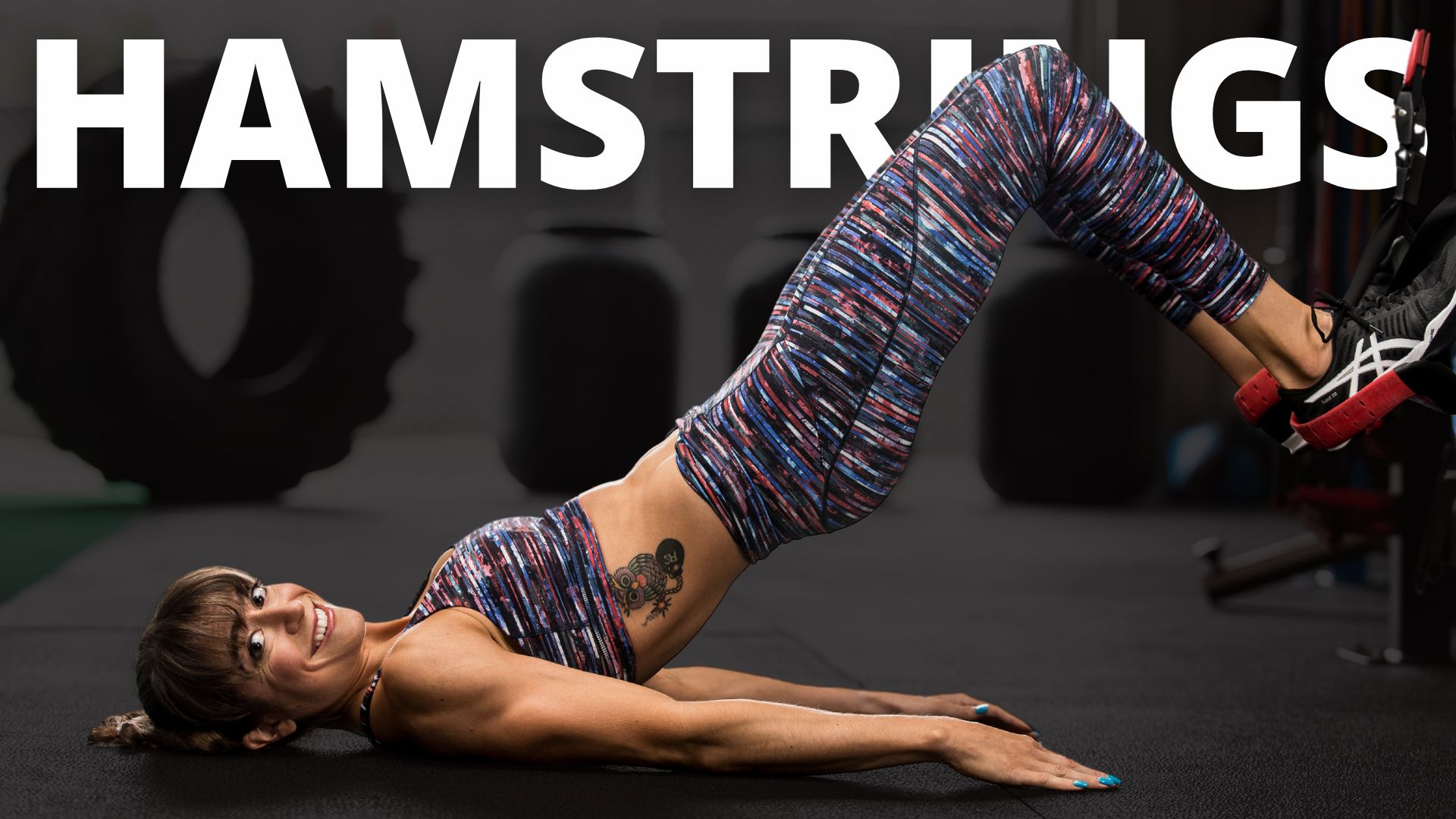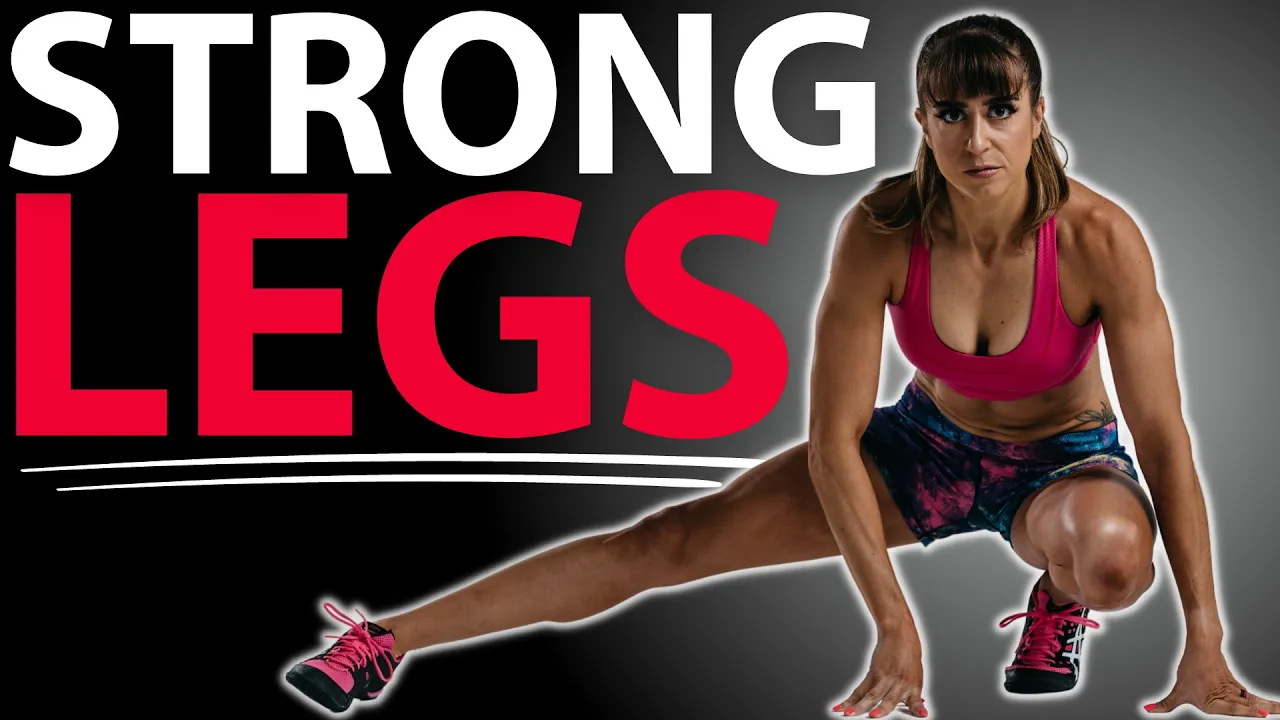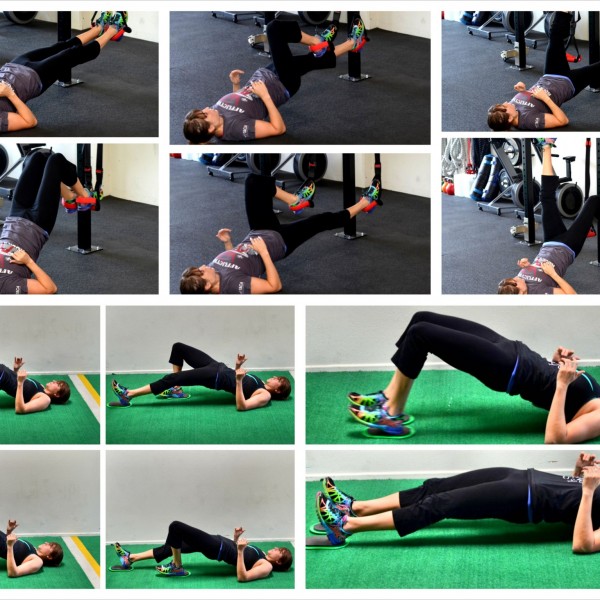
4 Hamstring Exercises For A Powerful Lower Body
When we get caught up in a single best move to work a muscle group, we miss out on the opportunity in all of the options out there.
Often we need different movements to work different areas or muscles in a muscle group.
So including a diversity of exercises over our weekly training schedule is key to help us see the best results as fast as possible.
Especially when it comes to muscle groups like our hamstrings that control movement at multiple joints like our hips and knees.
That’s why I want to share 4 moves to help you target all 3 hamstring muscles, working them with different positions and movements at your hips and knees.
But to truly value the different moves, and even include the ones we most need, it’s key we know a little bit more about our hamstrings first!

Your hamstrings are a group of 3 muscles on the back of your thigh that control movement at your hips and knees.
They extend, or straighten, your hips and flex, or bend, your knees.
Two of the hamstring muscles on the inner portion of the back of our thing can also turn our lower leg in, or internally rotate, when our knee is bent.
While the hamstring toward the outside back of our thigh can turn our lower leg out, or externally rotate, when the knee is slightly bent.
That hamstring toward the outside of our thigh, the bicep femoris, has two heads, a short and a long one.
This is also key to know as the long head can also turn our thigh out, or externally rotate, when our hip is straight.
While the short head can’t as it actually only controls and works to bend the knee.
These slightly different functions all mean that different moves can be more valuable to target different portions of our hamstrings.
It’s why considering our toe angle in moves can have an impact as well as the position of our hips and knees during the exercises.
It’s also why if you only do deadlifts with a straighter leg where you’re only moving at the hips you aren’t targeting your hamstrings fully since they also work hard to bend the knee!
This is truly why there is not just one best move!
And it’s why I want to share these 4 hamstring moves that cover both knee flexion and hip extension but also while performing these movements with different degrees of both included!
I’ll start with a common hamstring staple of any routine…
#1: The Romanian Deadlifts or RDLs
While there is some different terminology sometimes used when it comes to deadlifts with a straighter leg position, RDLS are commonly a top down version of a straighter leg deadlift.
You will focus on pushing your butt back with soft knees as you lower the bar down just below your shins to feel a big stretch on your hamstrings.
You will not bend your knees more to lower down further or touch the bar down.
You may also want a slight anterior pelvic tilt, or almost to act like you’re lifting your butt up as you lower to stretch your hamstrings and sit back further.
Then to stand up, you’ll really focus on pushing the ground away.
Keep the bar close to you as you lower and stand back up.
This focus on the lower down and hip hinge movement is what targets and works your hamstrings.
Just make sure you sit back and don’t round your back but keep your lats engaged to push the bar back into your body.
If you struggle with the barbell variation, dumbbells or even a kettlebell that you drop down between your feet can be great options.
You can also slightly tweak this deadlift to hit more of that bicep femoris long head by turning your toes out! Remember this aspect is worked by that turn out of the lower leg and thigh!
And you can always do a straighter leg deadlift variation as a single leg deadlift too if you don’t have weights to further progress this move.
The next amazing hamstring move focuses on working the hamstrings while the hips stay extended unlike the deadlift that works them through hip movement.
The Glute Bridge and Curl makes the hamstrings work by bending the knees instead to curl your heels in toward your butt.
The thing I love about this move too is it is so easy to use even when training at home.
And you can progress it through the use of different tools or even by making it a single leg over a two leg variation.
Sliders, stability balls, towels, suspension trainers are all great tools to use.
But I will warn you, this exercise is much harder than it seems.
You want to focus on engaging your glutes to bridge up and extend your hips as you brace your abs with a very slight tuck your hips up toward your ribs.
This is key to protect your lower back.
You will then extend your legs out from this bridged position fully without relaxing on the ground before using your hamstrings to curl your heels back in toward your butt.
That curl back in as you bend your knees while you keep your hips straight will have you feeling those hamstrings working.
Really focus on that pull back in with your hamstrings.
Just make sure your lower back doesn’t engage or hips don’t sag.
Because this move is deceptively hard, you may need to start with just sliding one leg out at a time and alternating sides or even holding the bridge as you work on just one side.
While the single leg variation with one leg raised can progress this movement and make it even harder, this single leg variation with stability can help you modify and build up!
The next exercise will also work the hamstrings through powering that knee bend but this time with your hips bent.
The Seated Hamstring Curl is an amazing exercise you can do with a band, machine or cable.
This seated position with the hip bent actually puts the hamstrings under more stretch.
And studies have shown that working the hamstrings while stretched can actually improve your muscle and strength gains for this muscle group.
Not to mention, the focus on knee flexion of both this move and the bridge and curl make sure you hit that short head of the bicep femoris which isn’t worked by the hip extension of the deadlift.
Make sure to sit so that you can extend your leg out in front of you with your hips bent then curl your heel in toward your butt while seated against the resistance.
You can even change your toe angle to target the different hamstring muscles slightly more or less. Turning your toe in will hit the two hamstrings on the inner portion of the back of your leg while turning your toe out will hit that outer hamstring muscle.
You may also find that flexing your foot makes you stronger with this movement to really focus on your hamstrings.
But don’t be afraid to still start light to really isolate that curl in with your hamstrings and perform a full range of motion,
And if you are at home you can even get away with a seated single leg towel curl which is just a bent hip variation in a way of the bridge and curl.
The 4th and final move I wanted to share goes back to targeting the hamstrings with a hip hinge but this time with your knees flexed unlike the deadlift.
This move is a variation of the Glute-Ham Raise that looks very simple but is oh so deceptively destructive.
It’s the Glute Ham Hip Hinge.
To do this move you will need someplace to sort of lock your heels under with your knees on padding. You’ll want to be able to really flex your feet as you lock your heels down.
If you have a partner they can hold your feet even.
You’ll set up kneeling and lean slightly forward to create that tension up your hamstrings.
Then keeping that position, you’ll simply hinge forward or bend at the hips.
This won’t be the biggest of movements but you’ll lean forward, about half way to parallel, just only bending at the hips.
Then use your hamstrings and your glutes slightly to come back up and extend at the hips.
You don’t want to sit back or change your knee bend. You want that slight lean forward to be maintained.
All the active movement comes from leaning forward then straightening your hips.
You’ll feel your hamstrings work isometrically with maintaining that hold and knee bend but also to power that move to come back up after leaning forward.
What seems like a very small move is incredibly hard without any weight.
And it’s even a great move to include for higher rep with very light or even no loads.
All 4 of these moves address different postures and positions to really hit all aspects of your hamstrings.
And even little variations in them, such as foot positioning, can help you truly adjust them to what youneed!
But use all 4 of these moves to target all aspects of your hamstrings and utilize both compound and isolation movements to really make sure you’re seeing those strength and muscle gains!
Take your training to the next level and build your leanest, strongest body ever with my Dynamic Strength program…
–> LEARN MORE






